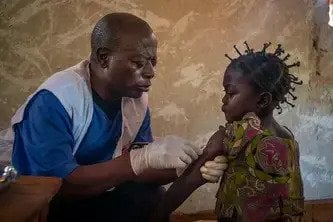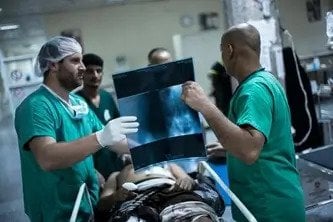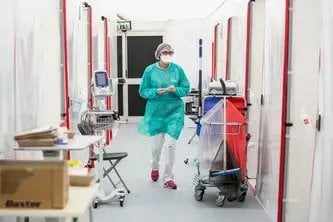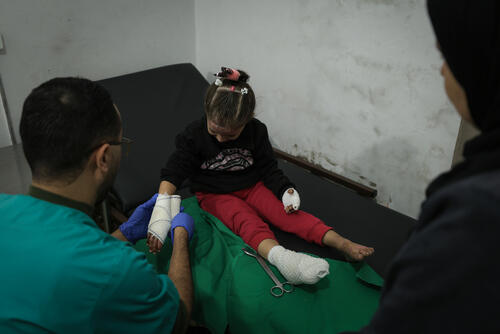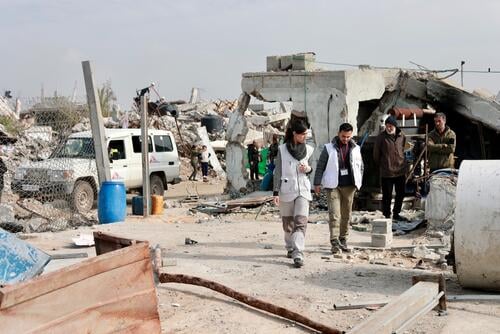A burn injury is more than just a wound – it is a prolonged sentence of suffering, and this is even more so in Gaza, Palestine. Many people have extensive burns covering large portions of their bodies – some people have as much as 40 per cent of their total body surface burned.
After over 19 months of attacks by Israeli forces that have decimated Gaza’s healthcare system, patients suffering burns from bomb explosions and improvised cooking methods are left with few options for care. As Israeli authorities maintain the siege on Gaza, blocking access to basic aid, medical and life-saving supplies, many patients are left to endure excruciating pain with limited or no relief.
In August 2024, 17-year-old Tayseer Mansour was badly burned all over his body in an Israeli strike that hit his house, killing his mother and injuring himself, his father and brothers. He is being treated by Médecins Sans Frontières (MSF) teams at Nasser hospital in Khan Younis, southern Gaza.
“I was severely injured with third degree burns. I’ve been in the inpatient department for more than 150 days now. I can’t move my hands anymore, it’s very painful,” says Mansour. “I can’t eat on my own or do much of anything else. This has had a big impact on me. I hope I will recover.”
I was severely injured with third degree burns. I’ve been in the inpatient department for more than 150 days now. I can’t move my hands anymore, it’s very painful.Tayseer Mansour, burn patient at Nasser hospital
Since Israeli forces resumed hostilities on 18 March, MSF teams have seen an increase in the number of patients with burn injuries – most of them children. In April, in our clinic in Gaza City in the north of Gaza, MSF teams are seeing an average of over 100 patients with burns and injuries a day. At Nasser hospital, the largest functioning hospital left in Gaza, MSF teams provide care for burn patients.
Since May 2024, MSF teams working in Nasser hospital have provided over 1,000 surgical operations to burn patients, 70 per cent of which have been children, most under the age of five. Many of these children were burned by bomb blasts and others by boiling water or fuel used for cooking or heating in makeshift shelters.
Severe burns require complex and long-term care, including multiple surgeries, daily wound dressing changes, physiotherapy, pain management, psychological support, and a sterile environment to prevent infection. However, after 50 days of no supplies entering Gaza due to the blockade, MSF teams are running low on even basic painkillers, leaving patients without adequate pain relief. At the same time, since the beginning of the war, only very few surgeons in Gaza have the ability to manage complex burn care plastic surgery.
“Children scream as we are forced to peel burnt fabric from their skin,” says Dr Ahmad Abu Warda, MSF medical activity manager working at Nasser hospital. “They beg us to stop but if we don’t remove the dead tissue, infection and sepsis can lead to death. Without enough medical supplies, and with too many patients needing care for burn injuries, we are not able to provide proper care. We are merely delaying inevitable infections.”
Children scream as we are forced to peel burnt fabric from their skin. They beg us to stop but if we don’t remove the dead tissue, infection and sepsis can lead to death.Dr Ahmad Abu Warda, MSF medical activity manager at Nasser hospital
While burn patients require a high level of healthcare, they also need over double the number of daily calories to heal properly. With no food entering Gaza, patients are surviving on insufficient amounts of food, jeopardising their recovery.
“The conditions in Gaza are extremely difficult. There is no healthy food, meat or proper nutrition,” says Mansour.
“Our patients’ bodies are consuming themselves to close wounds that never heal,” says one MSF surgeon. “Tayseer has been in the hospital for eight months. In normal conditions, he would have healed in three. But with no food, no pain relief, no clean water he’s stuck in a cycle of graft failures, infection, and despair.”
Since December 2024, MSF teams working in our Gaza City clinic and field hospital in Deir al-Balah, as well as Nasser hospital, have provided over 6,518 burn dressings. Yet, nearly half of these patients have not returned for follow-up care. As of 24 April, over half of the functioning health facilities in Gaza are located in areas under evacuation orders, according to OCHA, making healthcare almost inaccessible.
